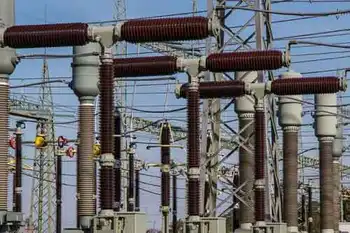GE meters used in AEPÂ’s smart grid demonstration
By Display Plus
Arc Flash Training CSA Z462 - Electrical Safety Essentials
Our customized live online or in‑person group training can be delivered to your staff at your location.

- Live Online
- 6 hours Instructor-led
- Group Training Available
These meters will give consumers the information to make informed choices about when and how they use electricity — enabling them to lower their electric bills without sacrificing lifestyle.
The GE meters are equipped with Silver Spring NetworksÂ’ proven, IP-based network technology, which creates a secure and intelligent communications platform for the smart grid. This platform enables two-way communications between the utility and consumers, supporting critical peak and time-of-use pricing and more.
Time-of-use pricing can offer consumers lower electric rates at night and other off-peak times. By encouraging people to move energy-intensive activities like laundry to times of lower demand, utilities can delay the need for new power plants, improve system reliability, reduce their carbon footprint and save their customers money.
“We are pleased to be a part of AEP’s approach to a holistic and comprehensive smart grid model with advanced technologies working together to maximize efficiency and reliability for both the utility and its customers,” said Bob Gilligan, vice president of GE Energy’s transmission and distribution business. “It’s an exciting opportunity to deliver more useable power for every kilowatt generated, while helping consumers manage their energy usage and keep their costs under control, without impacting their lifestyle.”
Smart meters work in conjunction with grid automation technologies to provide real-time information on the gridÂ’s status, right down to the consumerÂ’s home, for improved performance and productivity. These automated systems help prevent problems before they occur and resolve outages sooner.
This meter deployment, expected to begin in 2010, is part of AEPÂ’s overall gridSMART initiative. AEP also installed GE smart meters as part of its smart meter pilot project in South Bend, Ind. In addition to the meter infrastructure, GE also is working with AEP to implement technologies that will improve efficiency and productivity of the grid through improved automation and IT systems.
For example, GE is working with AEP to deploy technologies that help reduce electrical losses on power lines. In addition, AEP has implemented GE asset optimization solutions to maximize the life and performance of aging assets, while reducing the risk of unexpected transformer failure and unplanned outages — ultimately improving reliability for consumers.











